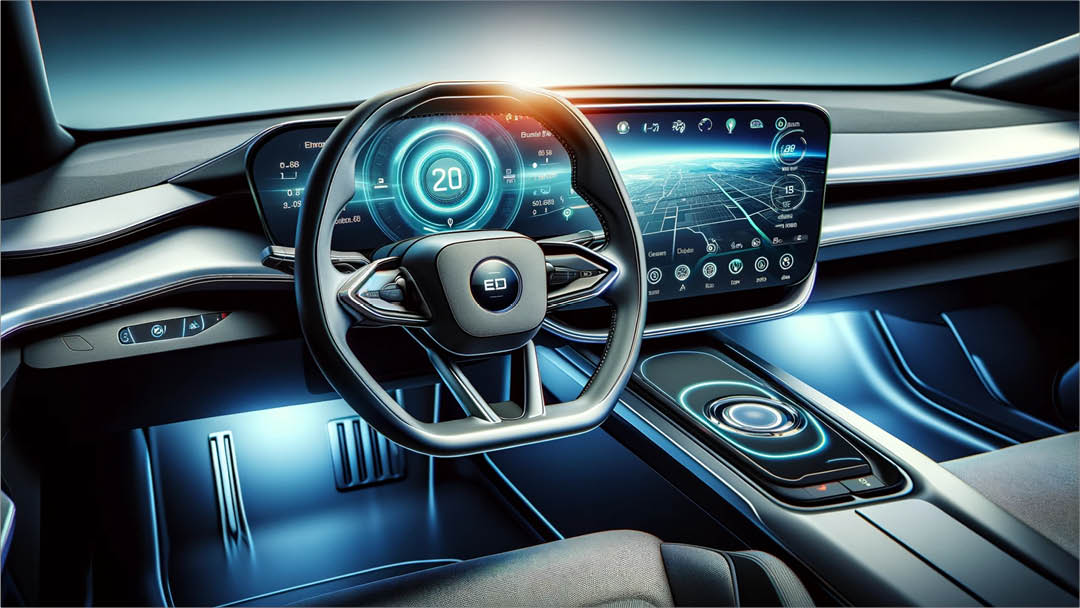In Brief
- AUTOSAR (AUTomotive Open System ARchitecture) is recognised as the standard in automotive software engineering, offering a uniform framework to address the increasing complexity within digital cockpits.
- Its modular approach, platform independence, and focus on interoperability facilitate efficient development, integration, and validation of cockpit software components.
- Acsia offers comprehensive AUTOSAR solutions, leveraging our deep domain expertise to optimise your cockpit development lifecycle and deliver cutting-edge in-vehicle experiences.
The automotive industry is undergoing a paradigm shift as software-defined vehicles (SDVs) become the norm. The digital cockpit, a central hub for human-machine interaction (HMI), vehicle control, and advanced driver assistance systems (ADAS), is at the forefront of this transformation. As the complexity of cockpit software continues to escalate, a structured and standardised approach like AUTOSAR is indispensable.
Demystifying AUTOSAR
AUTOSAR is a global partnership involving leading automakers, suppliers, and technology companies, committed to defining open standards for automotive E/E (Electrical/Electronic) architectures. Let’s break down the key architectural principles that make AUTOSAR ideal for the digital cockpit:
- Modular Design: AUTOSAR promotes the creation of self-contained software components (SWCs) that encapsulate specific functionality. This modular approach enables efficient development, reuse, and independent testing of individual SWCs, reducing the overall complexity of the system.
- Hardware Abstraction: The AUTOSAR Runtime Environment (RTE) provides a layer of abstraction between SWCs and the underlying hardware. This decoupling facilitates the portability of software across different vehicle platforms, streamlining the development process and enabling cost-effective scalability.
- Standardised Communication: The Virtual Functional Bus (VFB) is a core AUTOSAR concept that enables communication between SWCs through standardized interfaces, irrespective of their physical location or underlying implementation. This promotes interoperability, simplifies integration, and reduces the risk of errors due to miscommunication.
AUTOSAR: Addressing Cockpit Complexity
The digital cockpit is a prime example of where AUTOSAR’s strengths truly shine:
- Seamless Integration: Integrating new features, whether it’s a third-party navigation app or a cutting-edge driver monitoring system, is streamlined within the AUTOSAR framework. Clear interfaces and standardised data exchange mechanisms simplify the process, reducing development time and potential for errors.
- Accelerated Development: The ability to leverage pre-existing AUTOSAR-compliant SWCs from various suppliers allows automakers to focus on differentiating features, resulting in faster time-to-market and reduced development costs.
- Adaptable for Tomorrow: AUTOSAR’s modular architecture ensures it remains flexible and compatible with emerging technologies. Whether it’s integrating cloud connectivity, advanced machine learning algorithms, or new HMI paradigms, AUTOSAR provides a foundation for innovation.
From Classic to Adaptive: The Evolution of AUTOSAR
AUTOSAR has evolved to cater to diverse requirements:
- Classic AUTOSAR: Ideal for deeply embedded systems with real-time constraints, it excels in applications like powertrain control and chassis systems.
- Adaptive AUTOSAR: Tailored for high-performance computing environments, this architecture supports dynamic applications, service-oriented structures, and flexible development approaches. This is particularly suited for complex infotainment systems and emerging autonomous driving features within the digital cockpit.
Real-World Benefits for Automakers
For those shaping the future of the cockpit, AUTOSAR translates to tangible advantages:
- Cost Efficiency: Software reuse, streamlined development processes, and collaboration across the supply chain all contribute to reducing development and maintenance costs.
- Quality and Safety: AUTOSAR advocates for thorough testing protocols, enhancing software quality and minimising the likelihood of critical safety failures. It aligns with industry standards like ISO 26262 for functional safety.
- Innovation Unleashed: By simplifying integration and providing a solid foundation, AUTOSAR frees up valuable resources for automakers to focus on groundbreaking features and technologies that differentiate their digital cockpits.
Acsia: Your AUTOSAR Partner
Acsia boasts a team of seasoned AUTOSAR experts with extensive experience in:
- AUTOSAR Integration: Seamlessly integrate new features and SWCs into your existing AUTOSAR-based architectures.
- Custom Software Component Development: Design and develop tailored SWCs that meet your unique cockpit requirements.
- Optimisation and Testing: Ensure optimal performance and reliability of your AUTOSAR-based systems through rigorous testing and validation.
Ready to unleash the full potential of AUTOSAR for your digital cockpit? Explore Acsia’s comprehensive AUTOSAR solutions. Visit our website to learn how we can streamline your development process, reduce costs, and enhance the quality of your in-vehicle software.










